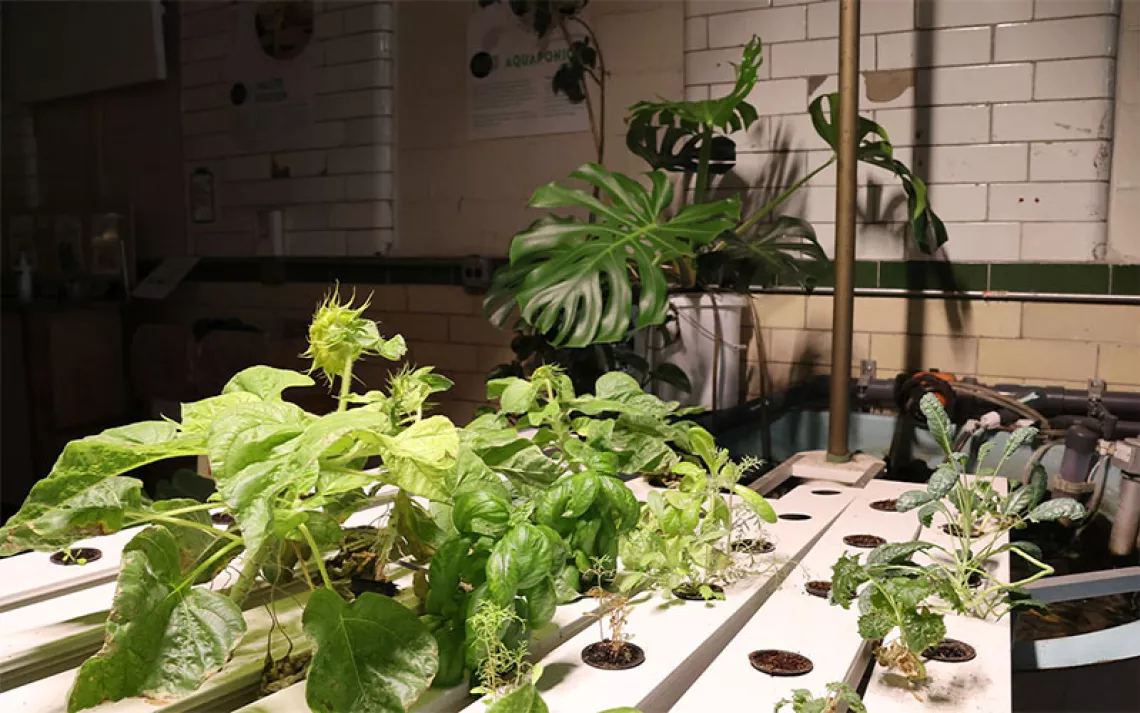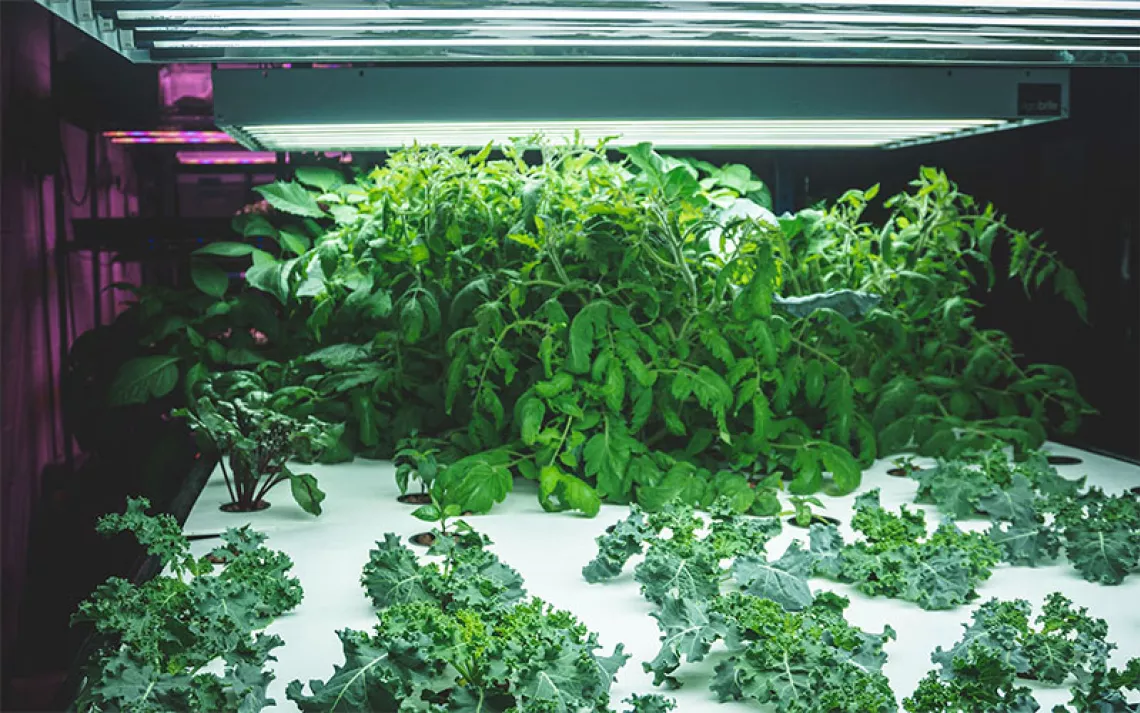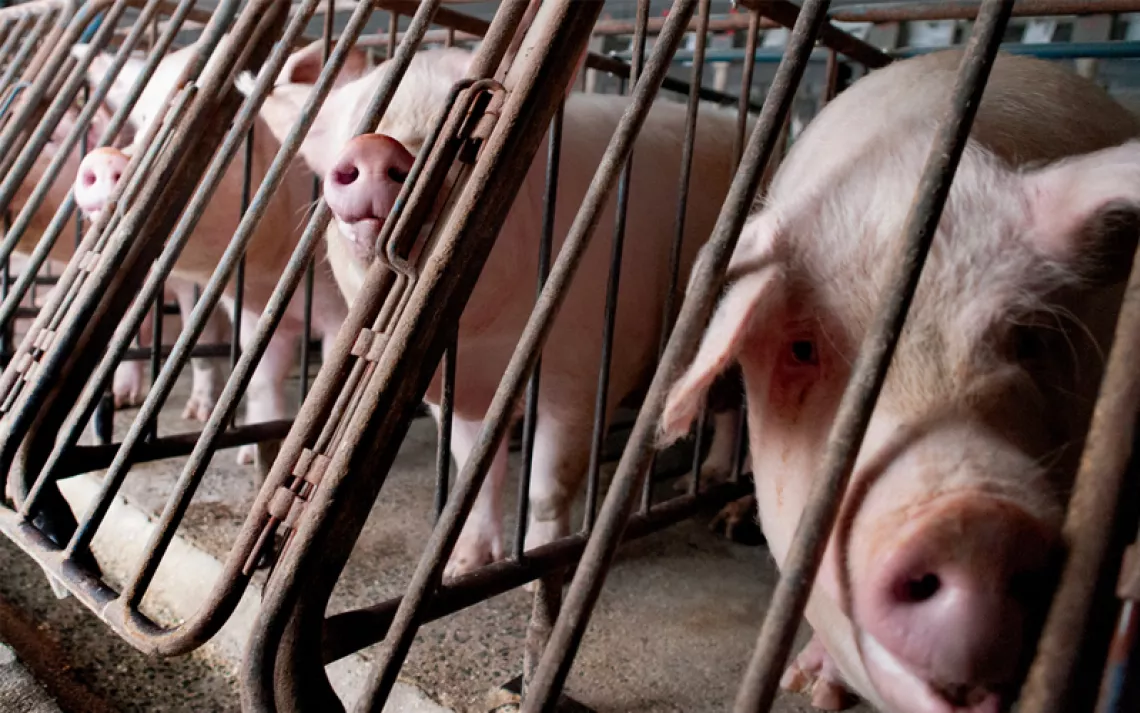From Farmworker to Farm Owner-Operator
In California’s Salinas Valley, one organization is helping immigrant laborers start their own farm
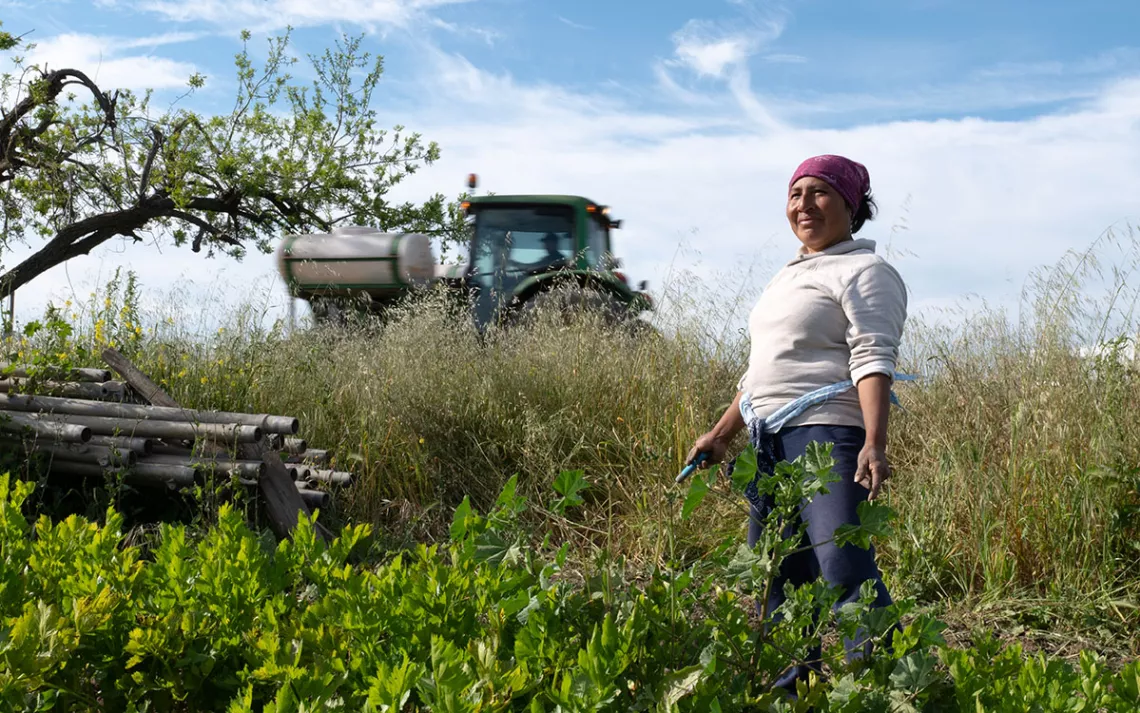
Maria Ana Reyes on her farm in the Salinas Valley. | Photo by Luke Robins
On a spring afternoon in California's Salinas Valley, Maria Ana Reyes was spreading fertilizer along a row of freshly sprouted vegetable seedlings. Reyes, who immigrated from Mexico in 1989 at the age of 14, now owns Narci Organic Farms, which on that spring day was packed with rows of kale, cabbage, and rainbow chard. The sun beat down on her as she worked, the temperature that day creeping above 80°F. Small red bursts dotted the green crop rows behind her, the season’s first strawberries showing their colors.
Reyes’s daughter, Yesenia Lopez, arrived at the farm speeding down the dirt driveway, flying over mud-caked tread marks and drawing to a halt. A small plume of dust swirled under her van. She was rushing from the Food Bank for Monterey, where she has been helping kickstart the food bank’s one-acre farm.
Reyes started her farm in 2016 and now runs it with the help of her two adult daughters. Reyes is one of a small but growing population of immigrant farm workers who have opened their own organic farms in California. Reyes’s farm is small by any measure, just 8.5 acres (the average farm size in the US is 463 acres). But its implications are far-reaching.
Seventy-eight percent of farm workers in the United States are Latino, the majority of whom are foreign-born. Yet just 3 percent of farm owners are Latino. “It’s quite obvious that something needs to be fixed,” said Nathan Harkleroad, the education program director at the Agricultural and Land-Based Training Association (ALBA), which trains immigrant farm workers to own and operate their own organic farms. Across the US, immigrant farmers like Reyes are overcoming systemic barriers to build a more just food system, one that simultaneously protects the health of farm workers, consumers, and the environment.
Immigrant farm owners are still “just a small drop in the bucket,” Harkleroad said, but it’s a group that is slowly changing farm owner demographics—because it has to. “We've got an aging farmer population in this country and despite all the interest in food, people aren’t actually lining up to become farmers,” he said. “That's a societal problem that we have to address.” Harkleroad believes that immigrant farm workers have the knowledge and skills to become the country’s next generation of farm owner-operators.
On the day I visited Reyes at her farm, we sought shelter from the heat in a small patch of shade beneath a tool shed. Reyes' gaze is steady, shy but determined. She wore her hair pulled back in a pink bandana, and her hands were strong and weathered, etched with the scars of decades of farm work. “I’m a woman who is very persistent in what I want,” she told me in Spanish.
The agricultural landscape surrounding Reyes’s farm is known as “America’s salad bowl.” It's where two-thirds of the country’s lettuce is produced, as well as much of its strawberries, broccoli, and artichokes. Over the last few decades, the Salinas Valley has been undergoing a quiet transformation, fueled—in part—by small farms like Reyes’s. Ten years ago, only 5 percent of Monterey County, where the Salinas Valley is located, was organic. Today, it's over 25 percent. “That's a major, major change,” Harkleroad said. Across the country, there are almost three times as many certified organic farms as there were two decades ago.
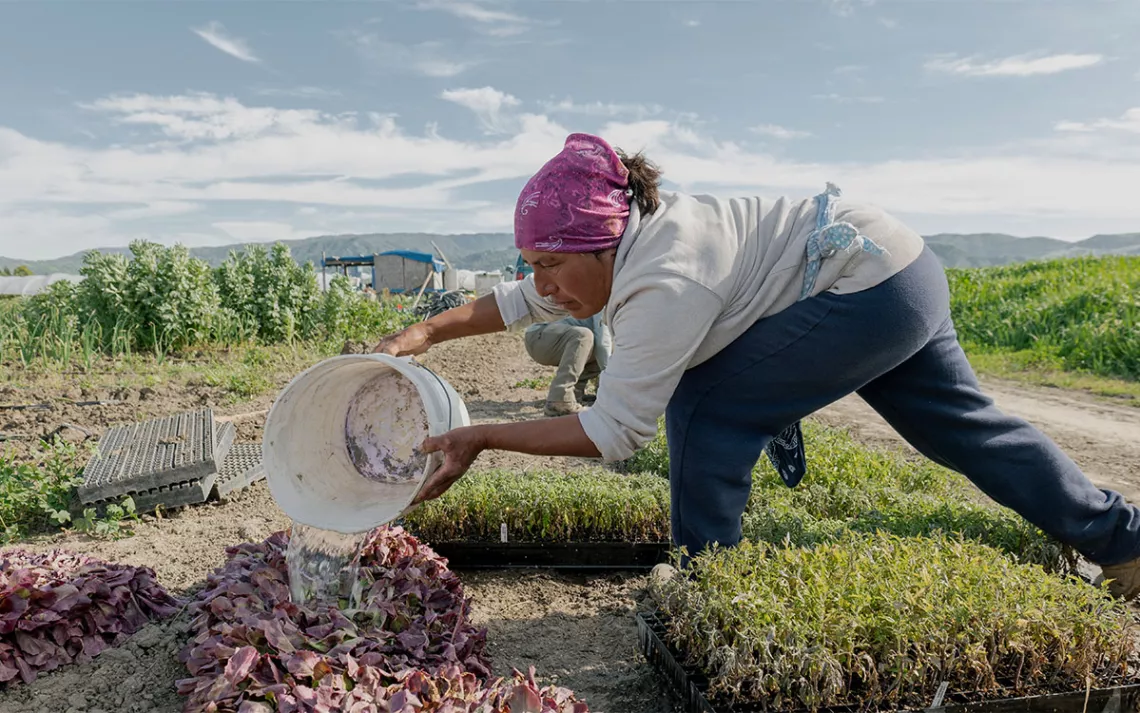
Maria Ana Reyes waters freshly sprouted vegetable seedlings at Narci Organics Farm in Salinas Valley. | Photo by Luke Robins
Reyes’s farm is certified organic, as well as regenerative—a method of farming that seeks to improve soil health, while also offering climate benefits. The US food system is a driver of climate change, contributing 10 percent of national emissions. Regenerative agriculture may be a way to lower that figure.
“Regenerative agriculture is a way of farming that gives back to the land, rather than just extracting from land. And one really important piece of that is returning organic matter to the soil,” said Liz Carlisle, associate professor of environmental studies at the University of California, Santa Barbara. As organic matter builds up in the soil, it sequesters carbon, explained Nathanael Gonzales-Siemens, the Pacific regional manager at the Rodale Institute, a nonprofit dedicated to growing the regenerative agricultural movement. Whereas conventional tillage releases carbon dioxide, research has shown that low-till or no-till methods can reduce agricultural emissions—though the science remains hotly contested.
Like many of the immigrant farmworkers in the US, Reyes had experience farming before she crossed the border. Growing up in Guerrero, Mexico, Reyes and her family were subsistence farmers who grew beans, pumpkins, and corn. When she immigrated to the US at age 14, Reyes found work as a strawberry picker on an industrial farm. “My whole life was pure strawberry until I started my business,” she said. Most days in the fields, Reyes worked from dawn to dusk, with hardly any breaks. Unable to afford shoes, she and many of the other field laborers worked barefoot, their feet caked in mud. “I've always thought that’s why a lot of women got sick,” Reyes told me. Back then, there were even fewer restrictions on pesticides. “Our skin absorbed those chemicals,” she said.
The pesticides commonly used on industrial farms are known endocrine disruptors, and farmworkers’ prolonged exposure to those chemicals has been proven to increase the likelihood of developing cancer, among other diseases. But Reyes, who was undocumented, felt she had no choice. “I had left my sisters with my grandmother, and I felt the need to make money to send home,” she said. On top of the risks associated with field labor, immigrant farm workers historically have been denied basic labor rights and safety precautions.
Strawberry picking was physically grueling. “You’re cutting and putting, cutting and putting,” Reyes said, as she mimicked the same repeating, backbreaking motion. Following the births of Reyes’s four children, she started to experience a sharp pain below her belly button. Soon, the pain became unbearable. Some days, she couldn’t walk. After visiting several doctors, Reyes learned that her uterus was severely inflamed—a condition that has been linked to high levels of pesticide exposure—and that she would need to have it removed.
Around the time of her operation, Reyes heard about ALBA from a friend who had attended the program. “Why don't you start your own business?” her friend asked. Reyes knew that post-surgery, her body wouldn't be able to tolerate field labor like it used to. So she enrolled.
Over the course of its two-year program, ALBA offers immigrant farm workers hands-on, land-based learning. At the end of the program, ALBA allows farmers to lease land and equipment at subsidized rates before they start farming independently. Since its founding, the program has launched over 250 farms. In the Salinas Valley, ALBA graduates make up 35 percent of organic farm owners.
Similar “farm incubators” have sprouted up across the country. In Washington, Viva Farms provides bilingual training in organic farming and assists new farmers in accessing land. In New York, Providence Farm Collective supports BIPOC farmers in leasing farmland and provides farmers with technical assistance.
For centuries in the US, agricultural labor has been undervalued, said Laura-Anne Minkoff-Zern, a food studies professor at Syracuse University and the author of The New American Farmer: Immigration, Race, and the Struggle for Sustainability. Despite the common misconception that field labor is unskilled, that’s not the reality.
Many immigrant farmworkers were raised farming in Mexico and come to the US with “the knowledge that we really need to create a sustainable food system,” Minkoff-Zern said. According to Carlisle, “There are really deep histories in Mesoamerica of regenerative practices,” including polyculture, cover cropping, and returning organic matter to the soil. Many farmworkers have also gained valuable knowledge of the land from their time spent working on US farms, which makes them well equipped to start their own farms, Harkerload said.
Despite Reyes’s experience and knowledge, leaving ALBA’s support systems was jarring. She had learned the necessary skills to own and operate a farm but lacked the money needed to lease land or rent equipment. “They’re aren’t a lot of safety nets,” Harkleroad said. Before Reyes could get going, she needed to secure an $80,000 loan.
Even for the most well-resourced farmers, making a profit is still “very, very difficult,” said Minkoff-Zern. But for immigrant farmers the barriers are exaggerated, she said. “The problem, of course, is capital, it's money, it's access to land, it's access to social networks, and the way immigrants are demonized and discriminated against in our country,” she said. Often, immigrant farmers are “not seen as legitimate farmers by people in power, by other farmers, by policymakers, and by people at the USDA.”
Federal and state programs that purchase land from retiring farmers and then make it available in an affordable way to new, underserved farmers offer one path towards supporting immigrant farmers like Reyes, Carlisle said. Subsidies that reward regenerative farming for its ecosystem services are another.
Reyes had to learn many things the hard way, often with little support. During her first season, she incorrectly assumed that she could use the same fertilizers she was using on ALBA’s land on her new farm. “I lost two acres of celery,” she said. Meanwhile, Reyes had to learn to adapt to the constantly fluctuating produce market, which, Harkleroad said, “can change overnight.”
During the farm’s early days, Lopez remembers wandering into her mother’s bedroom in the middle of the night to find Reyes still awake. Her face was illuminated by a small light as she worked through stacks of paperwork. She often had something to prepare for, Lopez recounts. While owning your own farm can be even more work than laboring in the fields, “you’re calling the shots,” Harkleroad said.
These days, Reyes’s two daughters, who both studied agriculture business in college, help their mother with the farm’s accounting, organic certifications, and communications. Lopez takes pride in their farm being women-led. “You don’t see a lot of women in ag,” she said. She’s also proud to know their produce is safe for humans and the environment. “Anybody can come to the farm and just grab whatever they want and eat it on the spot because it's free from pesticides,” Lopez said.
Recently, Reyes has been transitioning from selling her produce wholesale to selling at farmers' markets. “One on Tuesday, one on Thursday, four on Saturday, and five on Sunday—no time to rest,” Lopez said. “We’re going crazy at it right now.” Reyes hopes to expand her farm and hopefully, buy land. But organic land in the valley is very difficult to access, Lopez said.
“We're going to see a huge transition in agricultural land ownership in this country over the next couple of decades,” Carlisle said. “And the question is, really, who is that land ownership going to fall to?” This moment presents an opportunity to build a different kind of food system in the US—one that prioritizes environmental and human health, spearheaded by farmers like Reyes. But without policy that supports new and historically marginalized farmers, that is unlikely to occur, Carlisle said.
For Reyes and her daughters, running their own farm has been freeing. You turn on the TV and hear all this sad news, Lopez said, but when you’re out on the farm, “it’s just you and the wind.” Often, they work past sunset. As darkness blankets the farm, Lopez finds company in the sounds of crickets chirping as she works. “We’ve found peace doing this,” she said.
When I asked if Lopez plans to take over her mother’s farm one day, Lopez smiled sheepishly. “I would love to,” she said. But her mother, who is now a grandmother, isn’t retiring anytime soon. “I’m going to die doing this,” Reyes said.
 The Magazine of The Sierra Club
The Magazine of The Sierra Club
